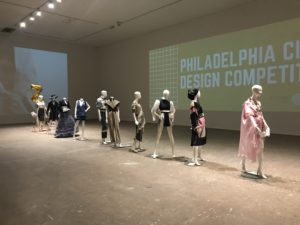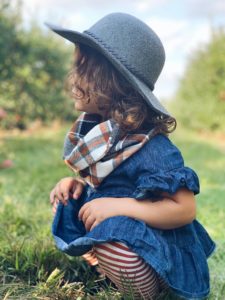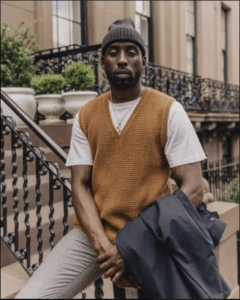
Jewish fashion experts in Philadelphia are tired of their COVID loungewear.
“I just feel like my days of leggings and tunics need to be behind me,” said Tina Dixon Spence, founder and CEO of children’s boutique clothing brand Buddha Babe.
As designers look to depart from sweatpants and hoodies, the second autumn of pandemic times is still on people’s minds, along with global climate change and the desire to make the fashion industry more sustainable in the future.
Still, the seriousness of current events shouldn’t put a damper on looking good.
Dixon Spence loves autumn, as it gives her the opportunity to layer clothing pieces.
“I love the idea of wearing a short-sleeve romper, but with a pair of tights under it, or throwing over a denim jacket,” she said.
As the weather cools, she hopes to see more chunky knitwear, prioritizing comfort for the toddlers she’s dressing, while still giving them something presentable to wear outside the home.
Though Dixon Spence designs clothing for children, her pieces bear a striking resemblance to what’s in style for adults.

At Rittenhouse boutique Sophy Curson, co-owner David Schwartz is noticing similar trends for a more-mature audience.
“This fall, I’ve been selling jeans, and I’m not usually a jeans store,” Schwartz said. “It’s sort of a way to get back to wearing proper clothes versus elastic waist joggers.”
Jacob Hurwitz, co-founder of the menswear brand American Trench, is leaning into what he calls “refined casual,” producing an influx of knitwear. Hurwitz believes that the classic look has been refreshed this year with the introduction of mismatched patterns and interesting textures on sweaters.
Once an “old-man look,” the sweater vest is making a comeback appearance at American Trench.
“The ’90s are having a nostalgia moment,” Hurwitz said.
Perhaps it’s Hurwitz’s way of harkening back to the good ol’ days, but wider-leg trousers and even cargo pants are making their return in the name of comfort, but certainly not to the JNCO jean-level of years past, fear not.
Hurwitz has noticed an uptick in the number of suits he’s selling, hinting at the return of wedding celebrations.
Henry A. Davidsen, Master Tailors & Image Consultants, has certainly felt the demand for suits increasing, having already made 40 suits this year, said Brian Lipstein, the company’s president and CEO. Lipstein has wedding fittings booked as far in advance as February 2022.
The increased demand, however, has put an unexpected strain on the business, as COVID continues to put strains on the supply chain of fabric. Lipstein said there’s a labor shortage of tailors not interested in returning to work if unemployment benefits pay more than a position in the clothing industry.
That is a national issue, according to Rachel Mednick, circularity/sustainability committee head at the Philadelphia Fashion & Garment Industry Task Force and an adjunct professor and fashion educator at Drexel University.
“COVID has exposed the disaster which is our current fashion system,” Mednick said. “And people have really become aware of the supply chain, and that your clothing doesn’t just come from a store, but it starts several miles away, with several people involved.”

That increased awareness, along with the global climate crisis, gives designers the opportunity to become creative with upcycling clothing, turning fabric from old garments into new ones.
At the first annual Philadelphia Circular Design Competition organized by Mednick, designers created an upcycled puffer jacket and patchwork jacket with recycled materials.
Schwartz has seen similar garments growing in popularity at his store, including a patchwork jacket made with upcycled scarves.
In addition to being more environmentally-friendly, they are a one-of-a-kind garment, making them even more appealing to consumers.
“It creates a little bit of excitement because you can’t come back and say, ‘I want to order that in a year,’” Schwartz said.
Also thinking about sustainability, Dixon Spence has focused on designing and creating clothes meant to last that can be passed down after a toddler has outgrown them, another fashion philosophy Mednick believes designers can adopt to become more sustainable.
Consumers can do their part, too, Mednick said.
By only buying what we really need and finding brands that pay workers living wages and use natural materials instead of synthetic ones, the buyer can make a difference in making the fashion industry greener, she said.
“If we want to live on a planet still, we need to do things differently,” Mednick said. “It really comes down to protecting our human race and our earth.”
[email protected]; 215-832-0741
Article From & Read More ( Fall Fashion Goes Green, Ditches Loungewear - Jewish Exponent )https://ift.tt/2ZKKwIR
Fashion
Bagikan Berita Ini














0 Response to "Fall Fashion Goes Green, Ditches Loungewear - Jewish Exponent"
Post a Comment